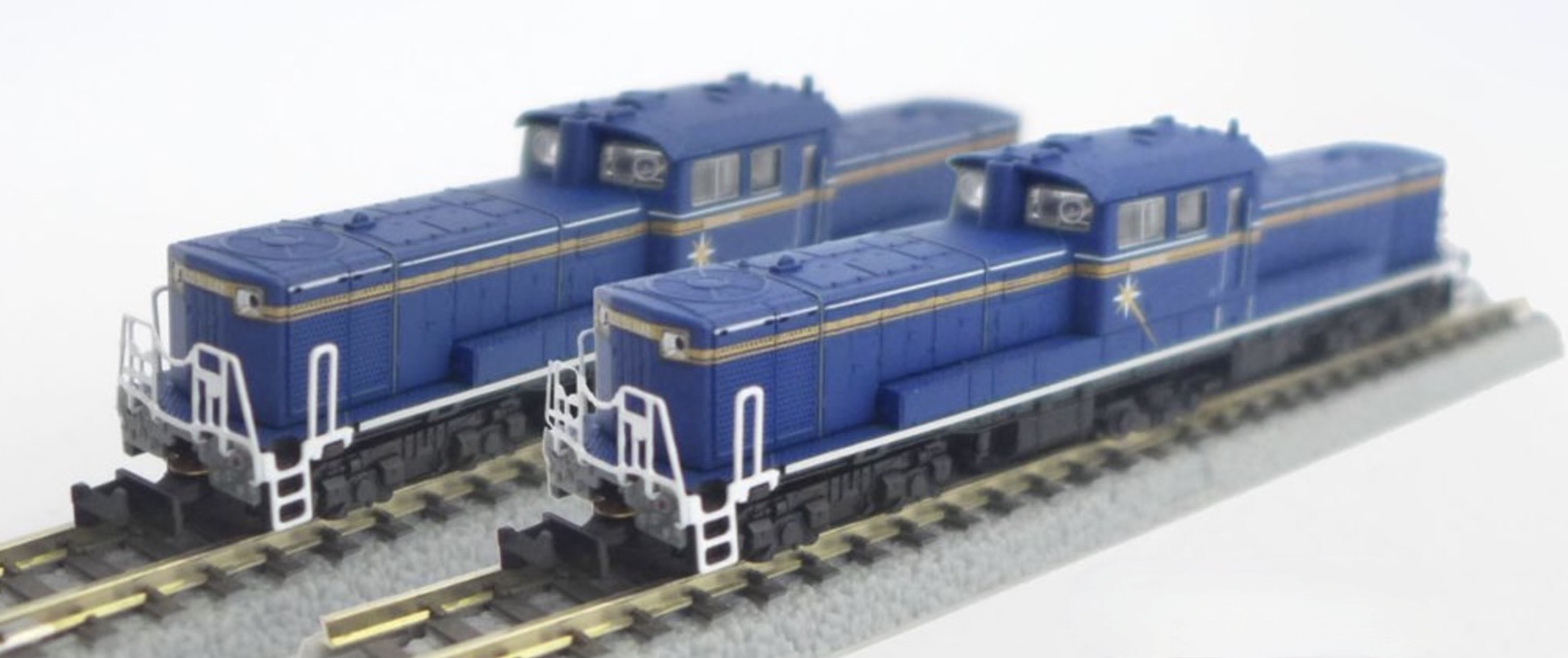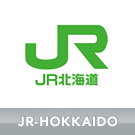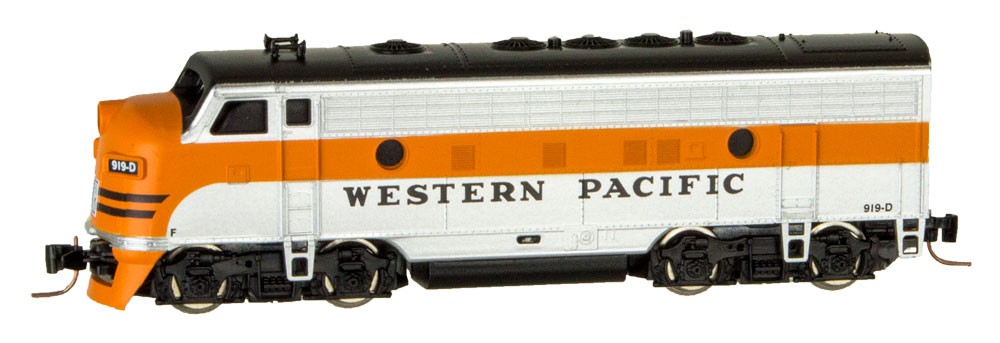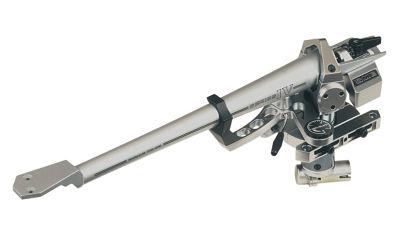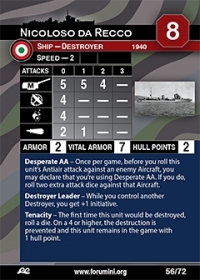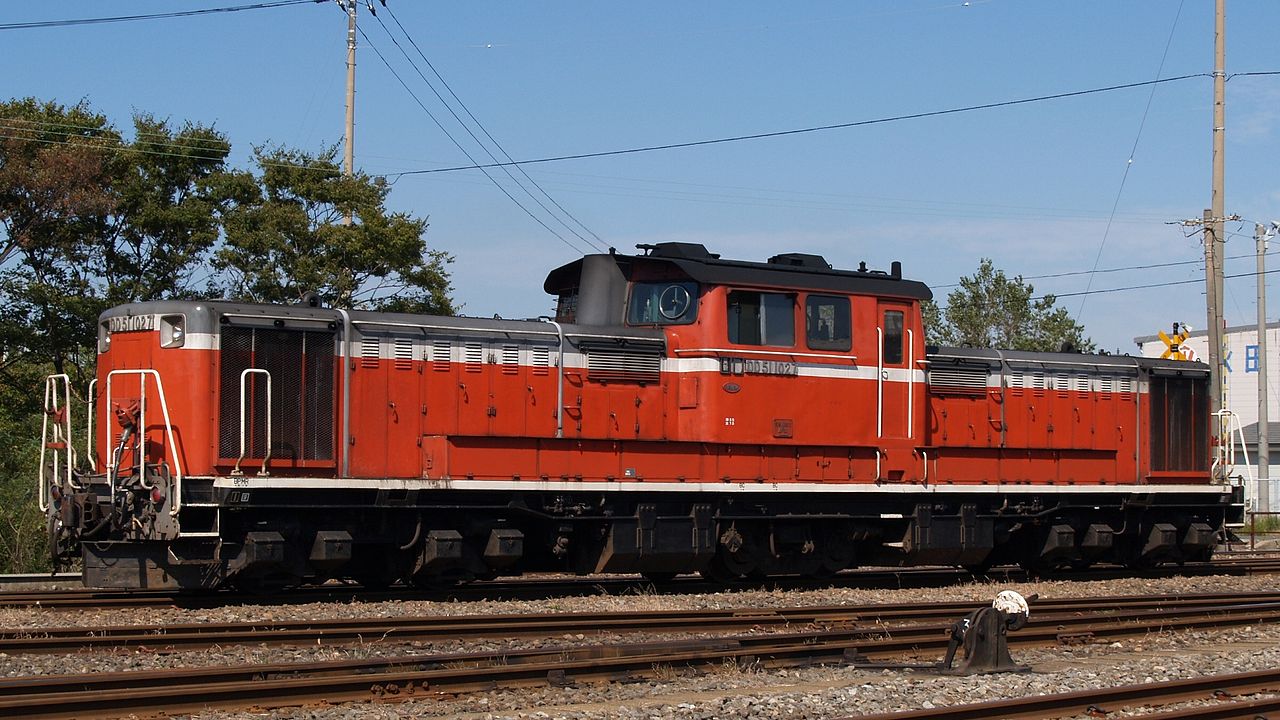Prototype History: The Class DD51 (DD51形) is a B-2-B wheel arrangement diesel-hydraulic locomotive type operated in Japan since 1962. 649 locomotives were built between 1962 and 1978 by Kawasaki Sharyo, Hitachi, and Mitsubishi. The class was designed for mainline passenger and freight use with more power than the D51 and a higher maximum speed than the C62 steam locomotive classes. This was achieved by installing two 1,100 hp engines in an 18 metre long centre-cab design, unusual for mainline operation. The V12 DML61 engines were developed from the 6-cylinder inline DMF31 engines used in the Class DD13 locomotives.[3] As of 1 April 2016, 29 locomotives remained in operation.
Road Name History: The Hokkaido Railway Company (北海道旅客鉄道株式会社 Hokkaidō Ryokaku Tetsudō Kabushiki-gaisha) is one of the constituent companies of Japan Railways Group (JR Group), and is often referred to using its official abbreviation of JR Hokkaido (JR北海道 Jeiāru Hokkaidō). It operates intercity rail services in Hokkaido, Japan. The company introduced Kitaca, a smart card ticketing system, from autumn 2008.
At the time of its privatization in 1987, JR Hokkaido operated 21 railway lines totalling 3,176.6 kilometres (1,973.8 mi) of narrow-gauge (1,067 mm (3 ft 6 in)) track, as well as a ferry service to Aomori. Since then, that number has dwindled to just below 2,500 kilometres (1,600 mi), as unprofitable lines have been shut down or spun off (in the case of the Hokkaidō Chihoku Kōgen Railway). The ferry service has also been replaced by the Seikan Tunnel.
On 19 November 2016, JR Hokkaido's President announced plans to further rationalise its network by up to 1,237 km, or ~50% of the current network, including closure of the remaining section of the Rumoi Main Line (the Rumoi - Mashike section closed on 4 December 2016), the Shin-Yubari - Yubari section of the Sekisho Line, the non-electrified section of the Sassho Line and the Nemuro Line between Furano and Kami-Ochiai Junction. Other lines including the Sekihoku Main Line, Senmo Main Line, the Naroyo - Wakkanai section of the Soya Line and Kushiro - Nemuro section of the Nemuro Line are proposed for conversion to Third Sector operation, but if local governments are not agreeable, such sections will also face closure.
Hokkaido Railway's headquarters are in Chūō-ku, Sapporo.
From Wikipedia
At the time of its privatization in 1987, JR Hokkaido operated 21 railway lines totalling 3,176.6 kilometres (1,973.8 mi) of narrow-gauge (1,067 mm (3 ft 6 in)) track, as well as a ferry service to Aomori. Since then, that number has dwindled to just below 2,500 kilometres (1,600 mi), as unprofitable lines have been shut down or spun off (in the case of the Hokkaidō Chihoku Kōgen Railway). The ferry service has also been replaced by the Seikan Tunnel.
On 19 November 2016, JR Hokkaido's President announced plans to further rationalise its network by up to 1,237 km, or ~50% of the current network, including closure of the remaining section of the Rumoi Main Line (the Rumoi - Mashike section closed on 4 December 2016), the Shin-Yubari - Yubari section of the Sekisho Line, the non-electrified section of the Sassho Line and the Nemuro Line between Furano and Kami-Ochiai Junction. Other lines including the Sekihoku Main Line, Senmo Main Line, the Naroyo - Wakkanai section of the Soya Line and Kushiro - Nemuro section of the Nemuro Line are proposed for conversion to Third Sector operation, but if local governments are not agreeable, such sections will also face closure.
Hokkaido Railway's headquarters are in Chūō-ku, Sapporo.
From Wikipedia
Item created by: CNW400 on 2021-09-21 15:17:58. Last edited by CNW400 on 2021-09-21 15:20:04
If you see errors or missing data in this entry, please feel free to log in and edit it. Anyone with a Gmail account can log in instantly.
If you see errors or missing data in this entry, please feel free to log in and edit it. Anyone with a Gmail account can log in instantly.


